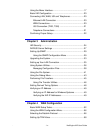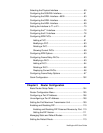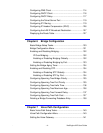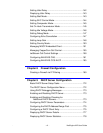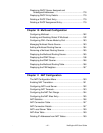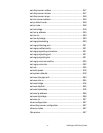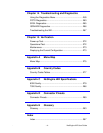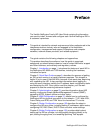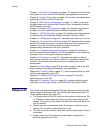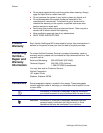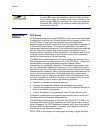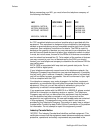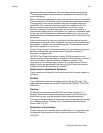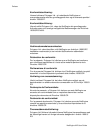
NetEngine IAD User Guide
The Verilink NetEngine Family IAD User Guide contains the information
you need to install, connect and configure each Verilink NetEngine IAD in
a customer’s premises.
Audience This guide is intended for network engineers and other professionals in the
telecommunications industry who are engaged in the installation,
configuration, management and support of telephone and computer
networks, network access products, and related equipment.
Contents The guide contains the following chapters and appendixes:
This preface describes the audience, how this guide is organized,
safeguards you should always observe, how to contact Verilink for support
and other business, and warranty and regulatory notices.
Chapter 1, Introduction on page 1, introduces the features of each IAD in
the NetEngine IAD 6000 and 7000 families, including the hardware,
indicators and ports.
Chapter 2, Quick Start Guide on page 9, describes the process of getting
an IAD up and running in a typical customer premises. This chapter is
helpful if you’re new to Verilink IADs, because it lists each step, beginning
with unpacking the IAD. It also provides information about logging on,
using the menu interface, setting the IP address, basic configuration tasks
and restarting the IAD. Once you’ve read this chapter, you’ll be well-
prepared to use the remaining reference chapters.
Chapter 3, Administration on page 23, provides information about IAD
security, configuring Simple Network Management Protocol (SNMP),
upgrading ACOS, system utilities and other topics.
Chapter 4, WAN Configuration on page 51, details how to configure the
NetEngine IAD for physical connection to the network—T1/E1 and xDSL,
Frame Relay and ATM, and TDM Voice for channelized T1 circuits.
Chapter 5, Router Configuration on page 103 describes the steps to
configure the IAD as a router, including setting IP addresses, static routes,
configuring RIP, DNS Client, DHCP Client and other router settings.
Chapter 6, Bridge Configuration on page 129, provides details about
setting up the IAD as a bridge, including setting bridging globally or by
port, setting the aging timer, and enabling Spanning Tree support.
Preface



